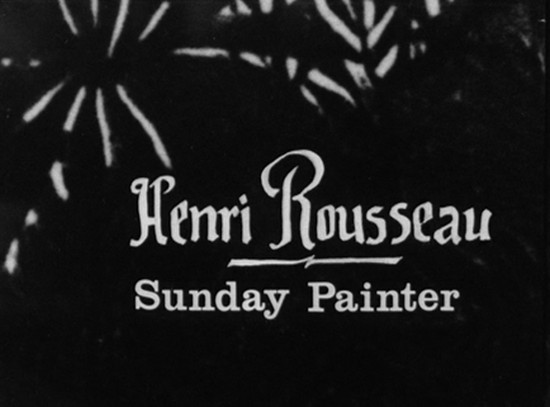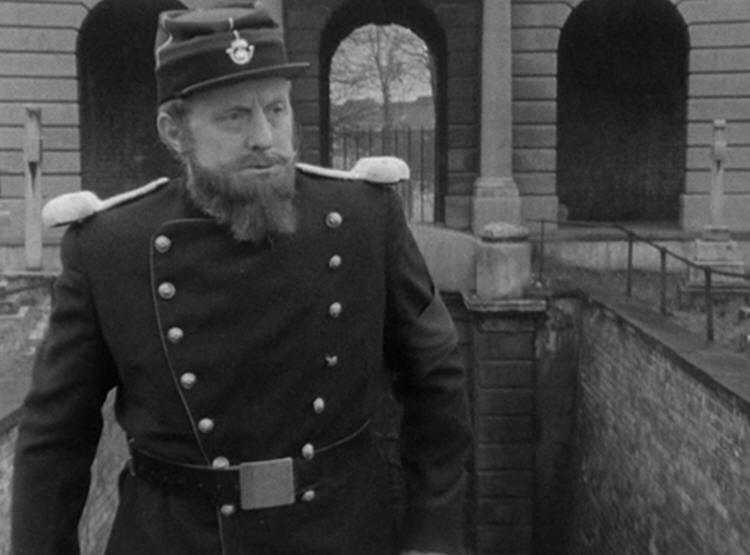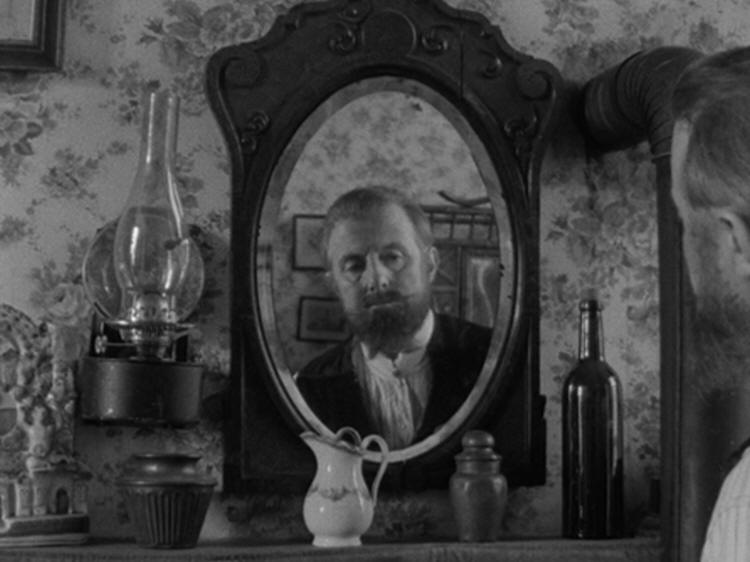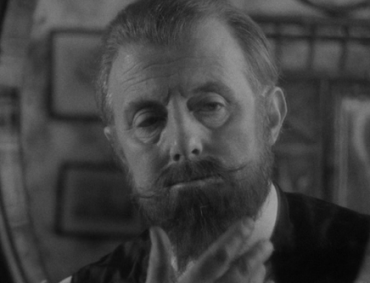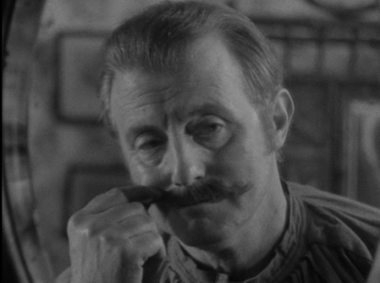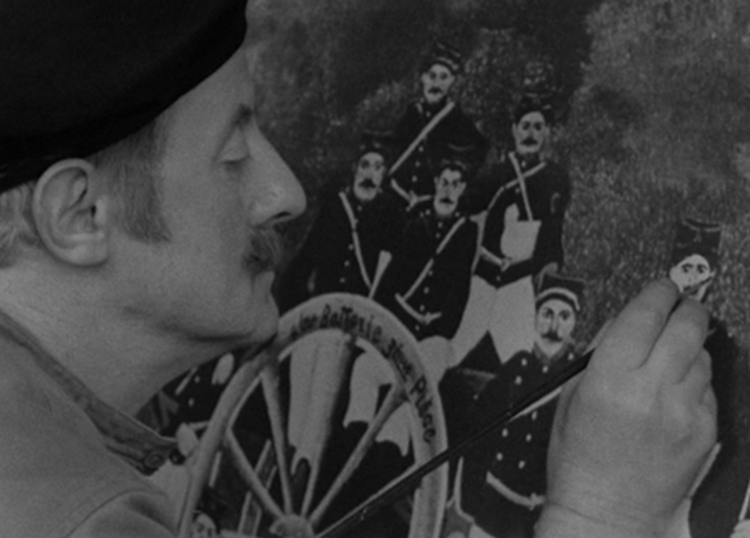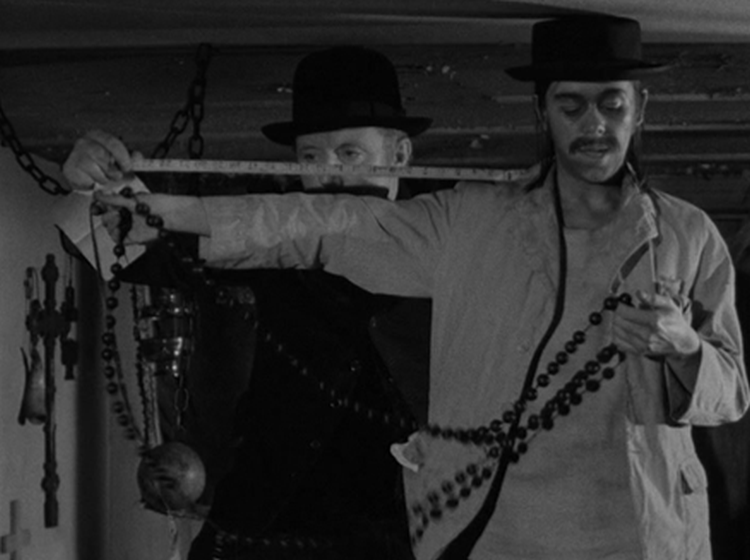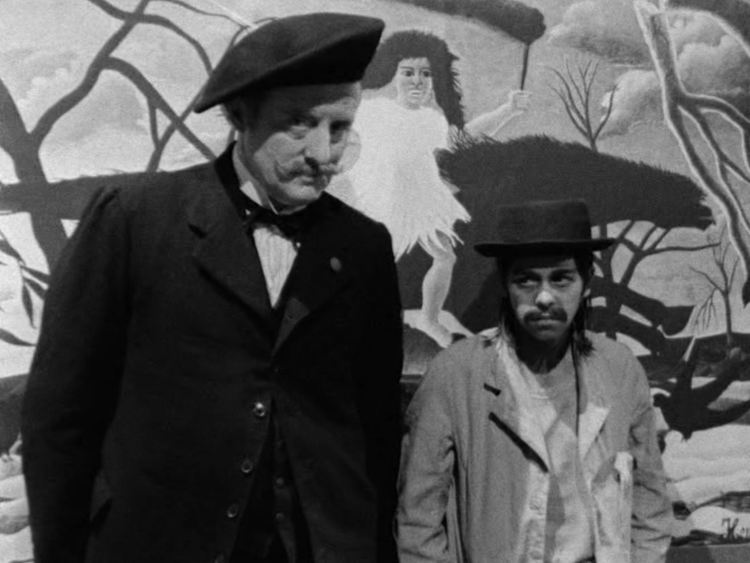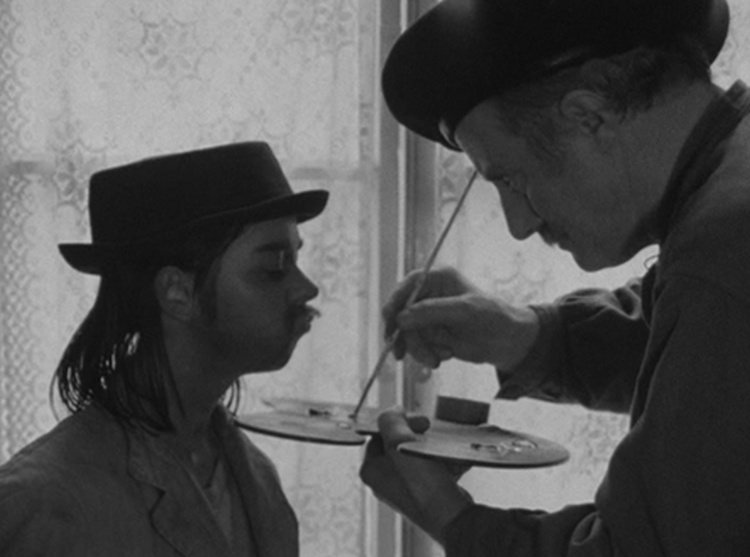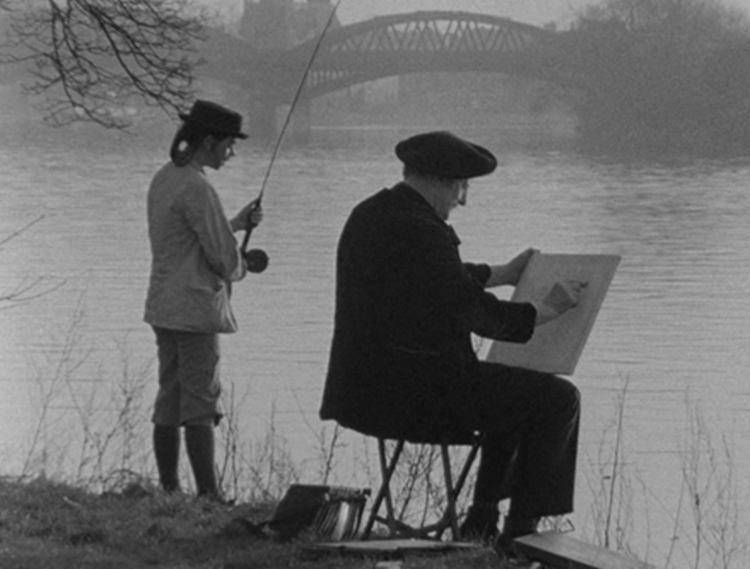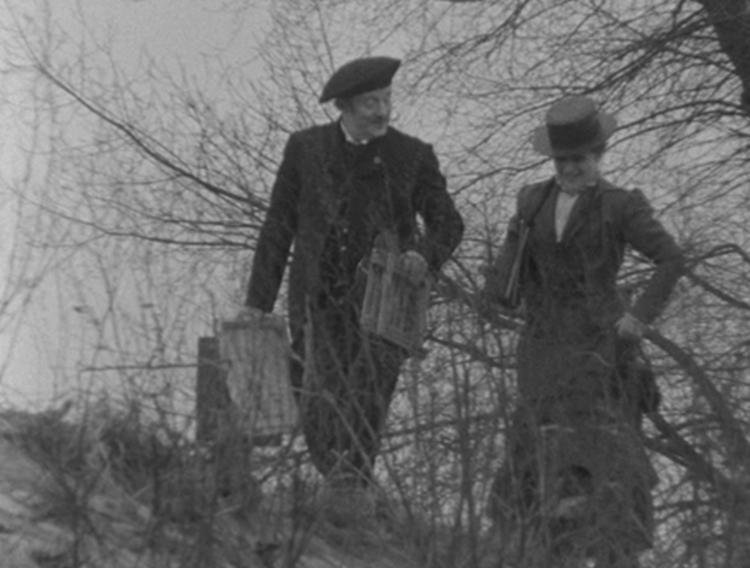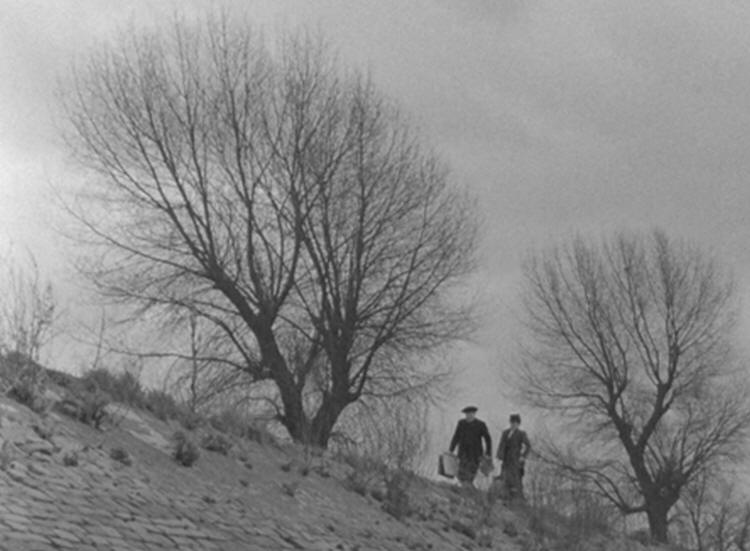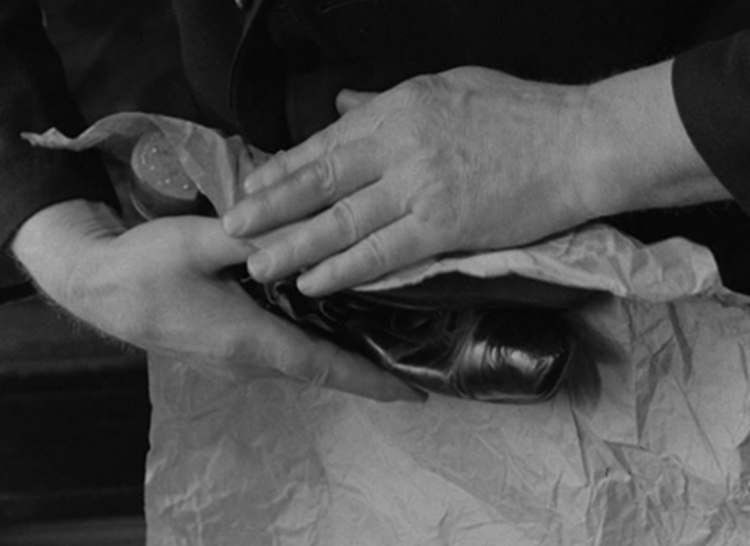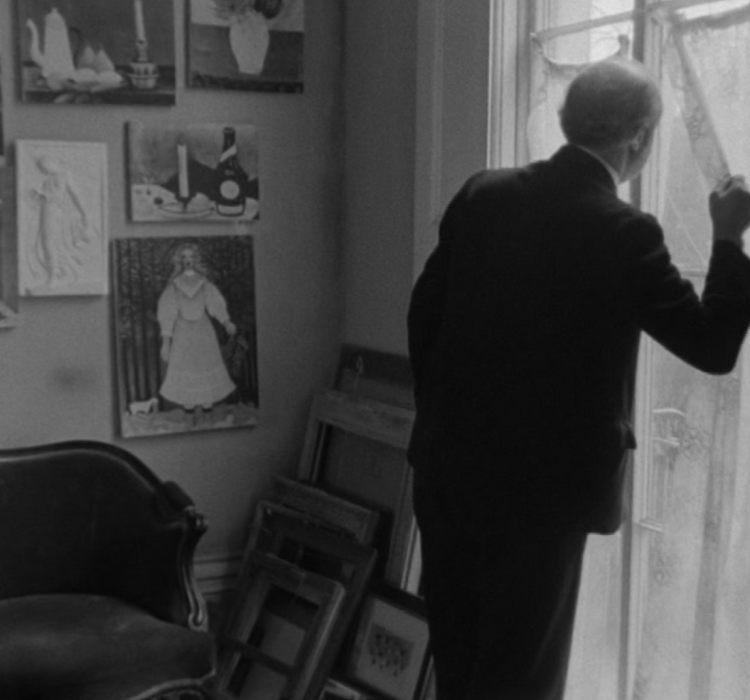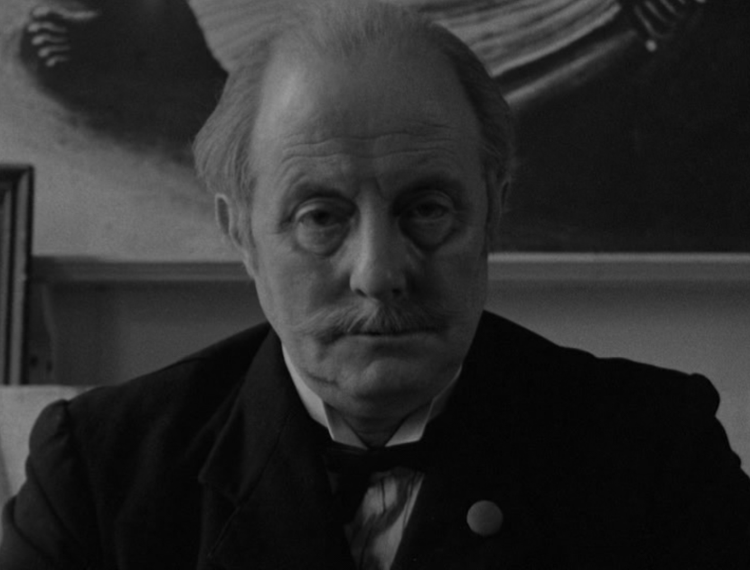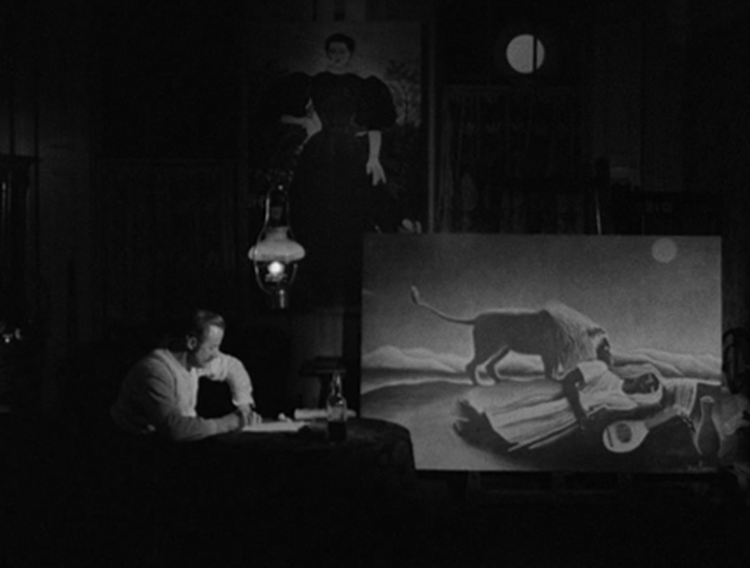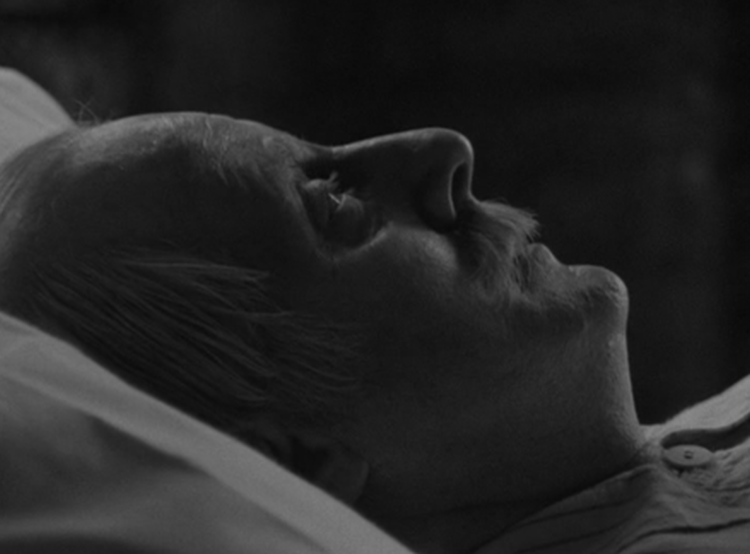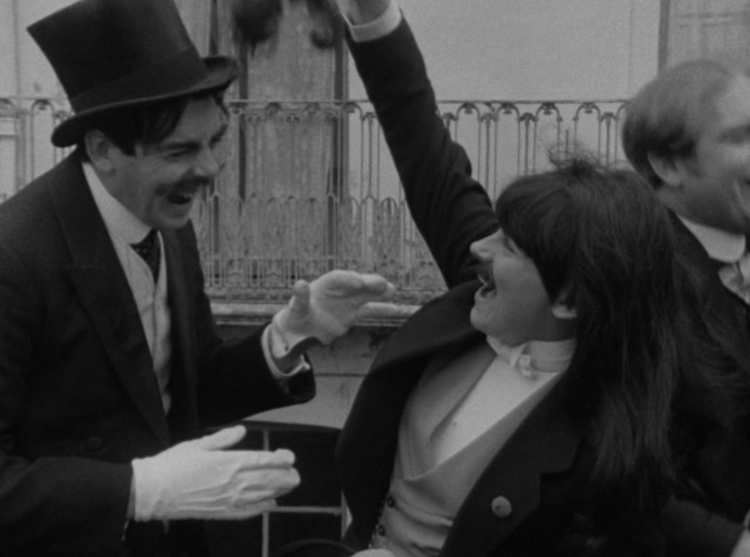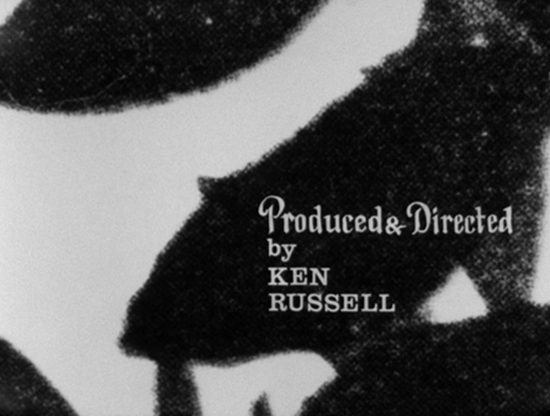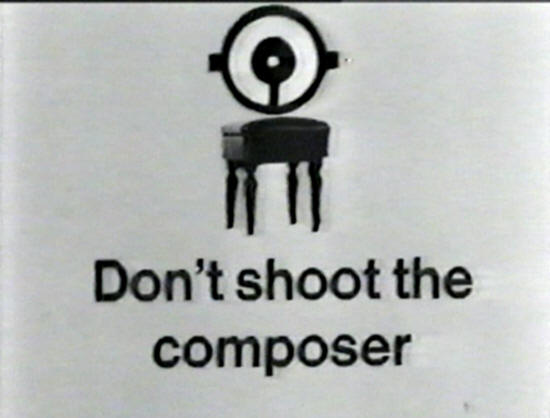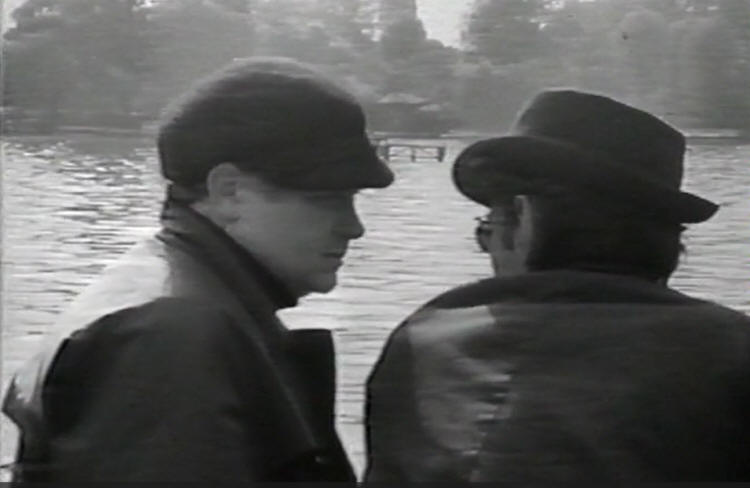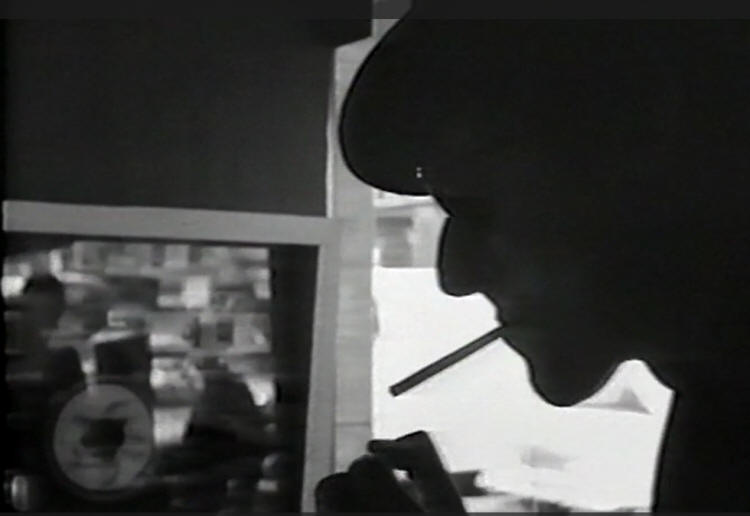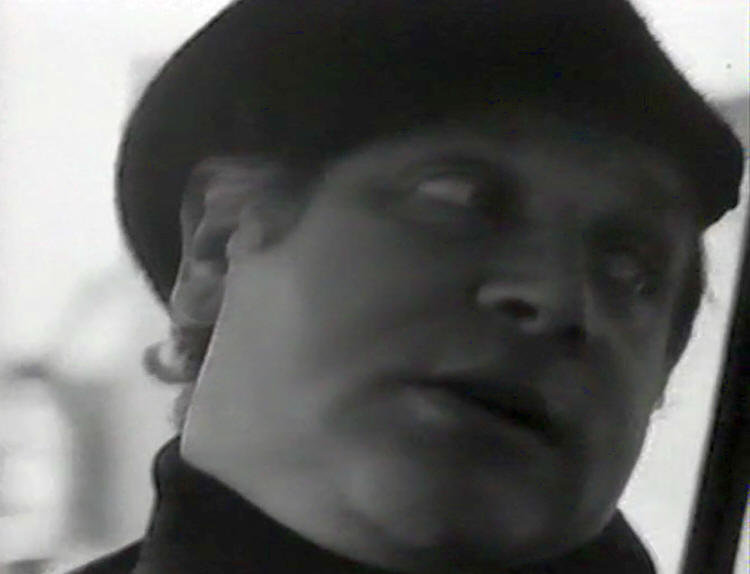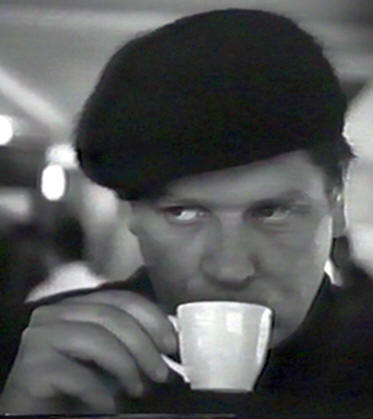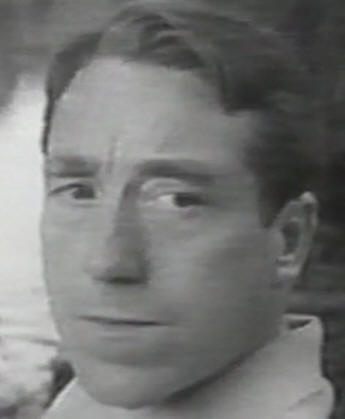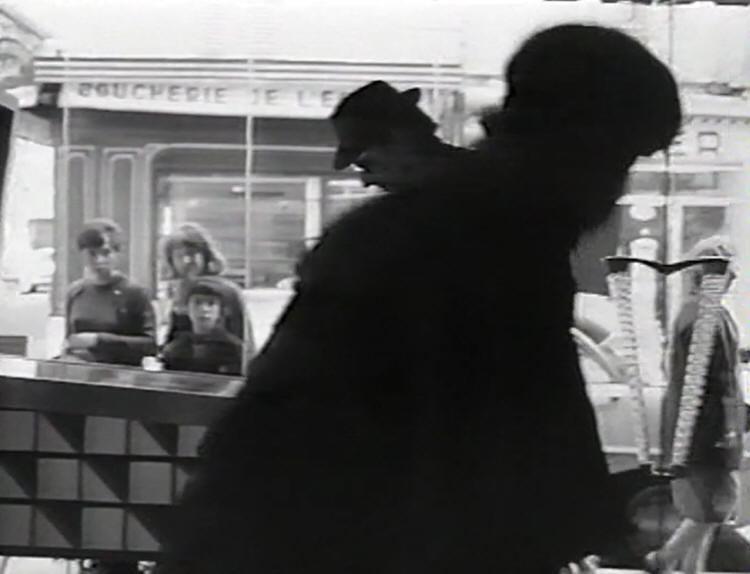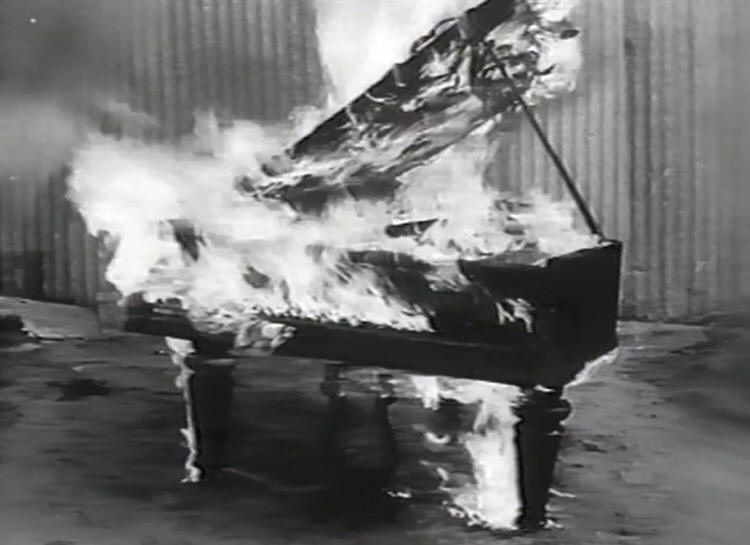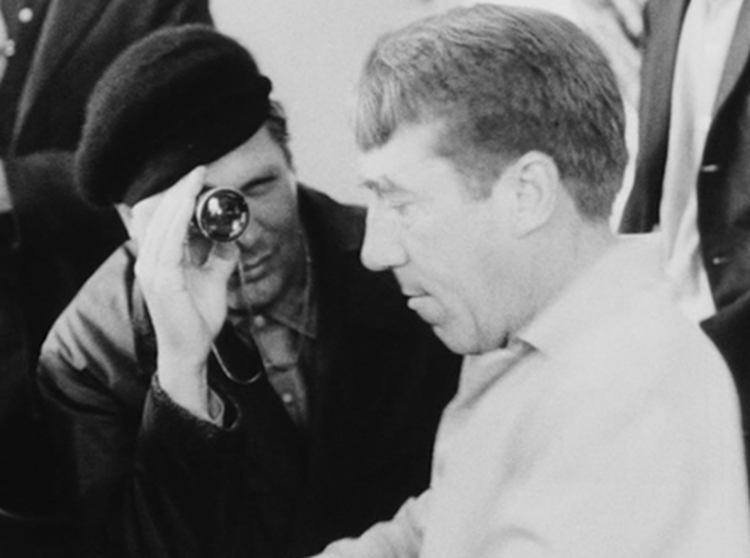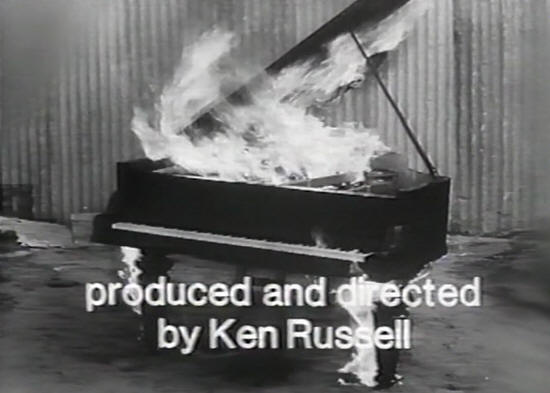|
Always on Sunday (though the title credit is Henri Rousseau Sunday Painter) from 1965 about the painter Rousseau. For the lead Ken cast the painter James Lloyd, who Russell filmed in The Dotty World of James Lloyd. An example of Russell getting a natural performance from a non-actor. "Henri Julien Felix Rousseau (May 21, 1844 - September 2, 1910) was a French Post-Impressionist painter in the Naive or Primitive manner. He is also known as Le Douanier (the customs officer) after his place of employment. Ridiculed during his life, he came to be recognized as a self-taught genius whose works are of high artistic quality" (from the Henri Julien Rousseau website www.henrirousseau.org).
Rousseau in his uniform of Second Class Clerk in the Paris Excise Service. His work meant he could only paint on Sundays. However when he left aged 49 he was free to paint and turns himself into a painter every day of the week, so the commonly used title Always on Sunday is not really appropriate.
Ken regularly includes a shot of people and their images in the mirror.
Rousseau transforms from a clerk to full time painter.
Rousseau would measure the people he was going to paint, and match the colours on his palette to their skin tones. Here he prepares to paint the playwright Alfred Jarry. For a period the two shared accommodation. Annette Robertson plays the male Jarry who was exceptionally short.
Brian Hoyle says her voice was dubbed by Keith Smith and Russell chose the accent to match Rousseau's broad regional accent (played by James Lloyd with a broad Yorkshire accent) in contrast to the critics who have South of England accents creating a North-South divide. "An inspiration for Dada and Surrealism and a touchstone for the Theatre of the Absurd, Jarry is most renowned for his play Ubu roi and the legend of its sensational premiere in 1896. To his contemporaries, however- figures such as Paul Gauguin, Henri Rousseau, Oscar Wilde, and Guillaume Apollinaire- Jarry’s prestige extended beyond theater. He applied his genius to poetry, the novel, and operettas; he was a graphic artist, an actor, a puppeteer, a critic, and the inventor of an imaginary science called pataphysics" (from The Morgan Library and Museum, Alfred Jarry The Carnival of Being exhibition 24 Jan- 16 Aug 2020 www.themorgan.org/exhibitions/alfred-jarry).
"For a time they lived on fish and fresh air".
When Rousseau married his second wife he was no longer alone. She would come with him when he painted.
But the happiness did not last as his wife died.
He packs away her clothing, wrapping up her shoes. She would no longer walk with him.
He is alone again.
The pain is etched on his face.
"Rousseau's flat, seemingly childish style gave him many critics; people often were shocked by his work or ridiculed it. His ingenuousness was extreme, and he was unaware that establishment artists considered him untutored. He always aspired, in vain, to conventional acceptance. Many observers commented that he painted like a child and did not know what he was doing, but the work shows sophistication with his particular technique." (from the Henri Julien Rousseau website www.henrirousseau.org).
From the film voiceover "Rousseau has suffered the fate of all
innovators". This could also apply to Ken. Brian Hoyle on the DVD
commentary says "I don't think it is too much of a stretch to say that
Rousseau is a kind of a Ken Russell self-portrait, or at least Russell
felt a very strong kinship with him". Hoyle continue to compare the
realist approach of documentary filmmakers at the BBC with Russell's work
which was bold and full of imagery and influenced by Cocteau and Lang.
Another typical Russell image, the close-up of a prone head. Here Rousseau is on his death-bed, dying with gangrene in a paupers hospital, "one of Russell's most delightful films, ending in a perfect dying fall" (John Baxter in An Appalling Talent). Kevin Jackson says the title Always on Sunday was chosen partly as a reference to the 1960's film Never on Sunday (from DVD notes). Having just used Oliver Reed as Debussy, Russell could not use him on-screen in the lead role too soon after, so Reed provides part of the commentary, hindered by his dyslexia. Lloyd also provided the initial commentary. Annette Robertson was also in The Debussy Film. Brian Pringle plays a dismissive critic, and would come back in French Dressing and The Boyfriend. Iza Teller would give a memorable performance and Madame von Meck in The Music Lovers. In the DVD commentary a letter from Ken to Teller states she would receive a guinea for one day's work.
The writer Susan Sontag has a short uncredited role- I think this is her, dressed as a man with a fake moustache, having taken part in a hoax on Rousseau. The music includes Jean Francaix's Au Musee Grevin and Georges Delerue's Jules et Jim- Ken used Delerue's music in French Dressing and his next film would be about Delerue. The scenario is by Russell and Melvyn Bragg and Bragg also wrote the commentary. Russell gets a director and producer credit.
All images from the film. The DVD commentary is highly recommended.
Don't Shoot the Composer from 1966, a documentary on the French cinema composer Georges Delerue
The detective Ken Russell (top and left) and victim Georges Delerue (right).
The problems of on-location filming, passers by looking at the film crew inside the cafe. "It was a satire on a BBC film unit making a serious documentary on a famous French composer and we did it in three different styles... we did it as a silent movie, where the composer would have written appropriate music, for such a sort of speeded up slapstick approach. We also did more serious versions but that was the last one, and I think the funniest" (Russell in Georges Delerue, a documentary on the composer directed by Jean-Louis Comolli, a transcript of the interview is here). Some of the compositions he did especially for the film were composed overnight. As well as demonstrating his composing talent, the film gives an idea of Delerue as a person, Delerue and wife going every night to the cinema, and the children acting in Russell's mini-films within a film. Delerue's French is not translated or sub-titled in the original version, though later versions have sub-titles.
The ending, with a piano in flames, and the flames slowly fading, skipping along the keys, till the piano is intact and it clear the film has been reversed, is one of Russell's most powerful images. Russell at his very best. Matthew Sweet states that Fred Zimmerman phoned Delerue to score his film A Man for all Seasons after seeing Russell's documentary (Matthew Sweet, BBC Radio 3 Sound of Cinema, 22 Jan 2016, click here). The title refers to Truffaut's Shoot the Pianist with a score by Delerue.
Ken Russell produces and directs, camera is by Ken Westbury who also worked with Russell on The Debussy Film and the editor is Gitta Zadek (he is not credited on imdb.com, accessed 26 Dec 2023). The scenes with Delerue's children are similar to how Russell filmed A British Picture with his own children. "Don’t Shoot the Composer is far from an ordinary profile of Georges Delerue. It also serves as a calling card for Ken Russell, whose work would define the 1970s as Delerue’s did in the 1960s. It begins with a sly work of pastiche, parodying the conventions of French noir. It goes onto encompass slapstick, verité scenes of the Delerue family and a harrowing montage of the Vietnam War. This eclectic approach gives us a sense of the different facets of Delerue’s life- his love of cinema, his home life, his work ethic" (Allan, rarefilmm.com, 25 Dec 2023, click here). For the interview with Ken Russell click here. All images from the film. |
